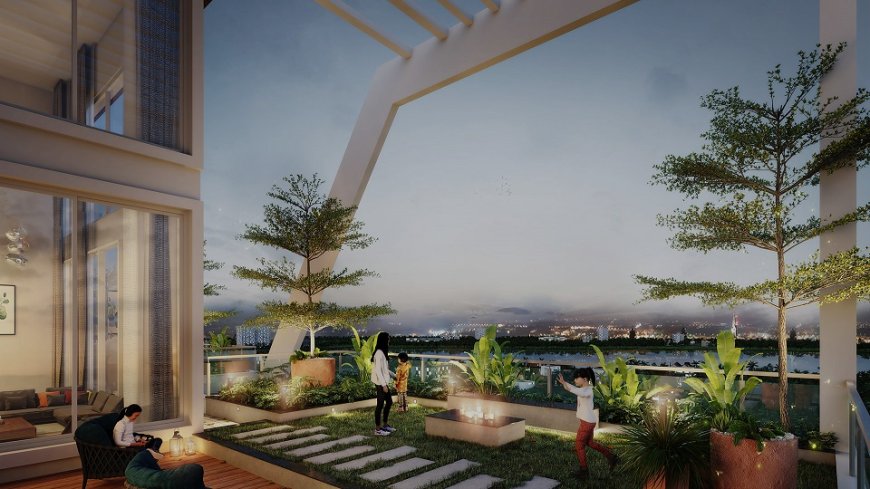Biophilic designs: Cooling homes naturally in the hottest summer yet
Developers are bridging technology and tradition in creating climate proof homes.

As India suffers through one of the hottest summers on record, with heatwaves engulfing urban and semi-urban areas, the issue of sustainable, climate-sensitive living has never been more pressing. Although air conditioners and artificial cooling systems provide short-term relief, they are achieved at the expense of exorbitant electricity bills and higher carbon emissions. Biophilic design, which marries nature into constructed spaces, is proving to be a natural and sustainable solution—and visionary developers are at the forefront of revolutionizing how we construct for the future.
What is biophilic design?
Biophilic design takes its inspiration from the term ‘biophilia’, or the love of nature. In essence, it seeks to reconnect humans to the natural world by including elements such as natural light, ventilation, greenery, water elements, and organic materials into building design. While superficial landscaping or aesthetic plants are nothing but cosmetic touches, biophilic design incorporates nature into the very structural DNA of a space—influencing the way people feel, breathe, and live.
In the context of India's increasing temperatures and urban heat islands, biophilic design minimizes thermal load, cooling interiors naturally without wasteful energy usage.
Why biophilic design matters now more than ever
For the past few years, summer has revealed the vulnerability of our constructed environments. Cement-heavy cities trap heat, sealed glass façades block ventilation, and traditional architectural designs disregard the most basic climate requirements of tropical regions. With the power grid stretched and air quality dipping, developers need to turn towards climate-resilient architecture and biophilic design is a strong beginning.
The integration of green elements such as vertical gardens, internal courtyards, shaded balconies, and porous façades can reduce indoor temperatures by 3-7°C, decrease dependence on artificial cooling, and enhance overall well-being. Research has also indicated that biophilic design can enhance sleep quality, decrease stress, and increase productivity.
Design features that cool without power
Biophilic houses utilize passive cooling strategies and environment-sensitive materials to outsmart the heat:
· Internal courtyards: Support cross-ventilation and daylight while limiting heat gain.
· Green facades and vertical gardens: Filter strong sunlight and cool naturally through transpiration.
· Shaded balconies and deep overhangs: Avoid direct solar gain while providing useful outdoor spaces.
· Natural materials: Utilization of stone, clay tiles, and lime plasters that naturally stay cool and reflect less heat.
· Water elements: Fountains and reflective pools that lower ambient temperature and enhance humidity levels, providing relief in arid conditions.
These elements blend beauty with functionality, enabling residents to live more comfortably, economically, and sustainably.
The future of cooling is rooted in the past
Ironically, the sustainable cooling of the future draws largely from vernacular Indian architecture. From jalis in Rajasthan to courtyard houses in Tamil Nadu, our forefathers knew how to construct in harmony with nature. Biophilic design draws upon this wisdom and translates it to contemporary urban life without compromising on comfort or luxury.
Developers are bridging technology and tradition in creating climate proof homes. With the heat of summer months breaking records regularly, this move towards nature may be the most progressive solution in our hands.
Conclusion: Living smarter, cooler, greener
In an age of climate unpredictability, biophilic architecture is imperative. It is an all-embracing change in the way we conceptualize space, comfort, and sustainability.
As we are about to experience much hotter summers in the coming years, our solution to beating the heat resides in bringing back nature into our homes.








